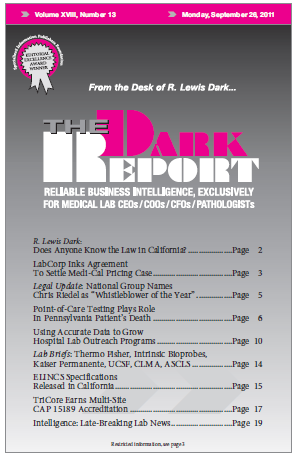CEO SUMMARY: In recent years, the laboratory outreach program at the Robert Wood Johnson University Hospital in New Brunswick, New Jersey, has achieved impressive rates of growth in specimen volume and net revenue. One reason for this success is that the lab outreach program monitors key data in real time and responds nimbly to the …
Using Accurate Data to Grow Lab Outreach Read More »
To access this post, you must purchase The Dark Report.


